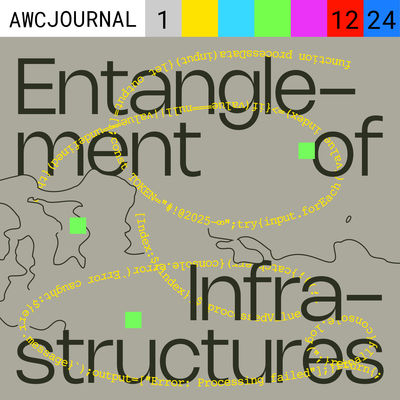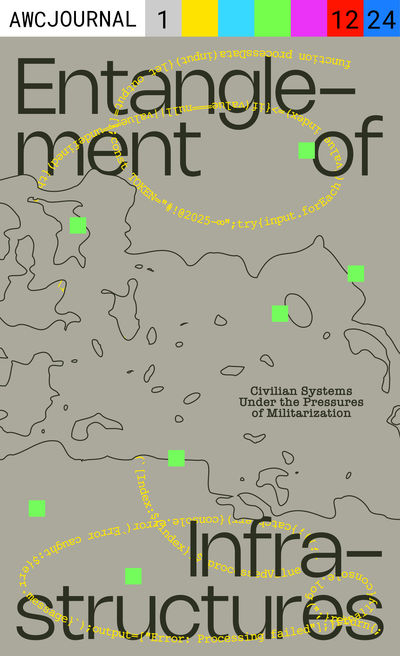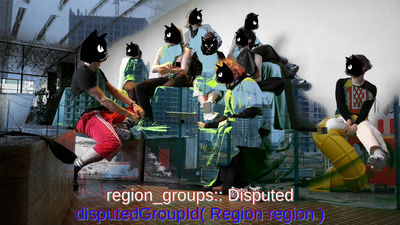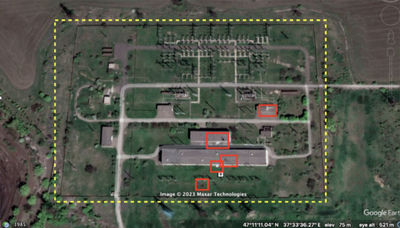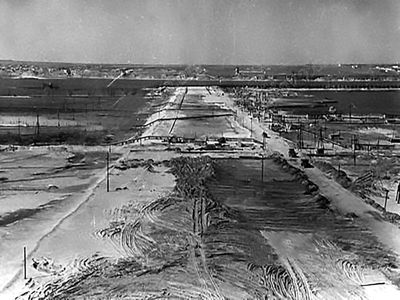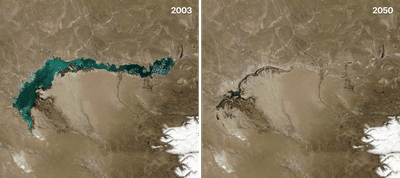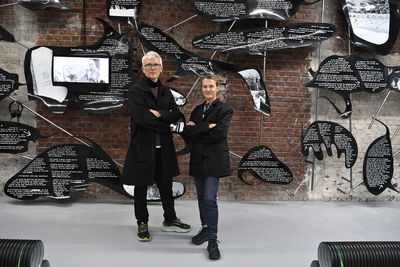
The Alienation Zone: Radioactive Entanglements of Past and Present

Research map
I want to bring you to Paliessie
Paliessie is a natural and historic region which partly correlates with the Paliessie Lowland. Most of this lowland is situated on the territory of Belarus and Ukraine. The name Paliessie comes from the word 'les'—forest—with the prefix 'pa'—meaning on, along. In the 16th century, Sigismund I the Old (the King of Poland and Grand Duke of Lithuania, 1506-1548) gave the Paliessie territories as a wedding gift to Bona Sforza d'Aragona. While travelling on the river Styr, a tributary of the Pripyat, Bona Sforza was impressed by the land. She added the Davyd-Haradok, Pinsk and Kobryn estates, which are historically Paliessie lands, to her ownership. Bona Sforza contributed to the colonisation of the land and the promotion of agriculture, which required draining the marshes. In the 18th century, Matheus Butrymowicz was the first landlord to start drying out the marshes in order to build estates and roads. Then, in the 19th century, after the land became part of the Russian Empire, Joseph Zhilinsky introduced a land development plan involving the construction of a network of reclamation canals to convert Paliessian lands into agricultural land.
Niežychaŭ is situated 23 km from Pripyat, now part of the exclusion zone, and surrounded by canals to drain the water as it is basically on a swamp. Closer to the forest there is fine white sand, which naturally drains the water, allowing trees and mushrooms to grow and people to live there. It is now part of the Paliessie State Radioecological Reserve, a protected zone where the effects of radiation are studied. It was possible to visit that area as part of an excursion or during Radaŭnica (the "Day of Rejoicing" is a commemoration of the departed, a national holiday when people gather to drink and eat at the gravesides of ancestors). Since 2008 the village no longer officially exists. In 1986, following the explosion in the Charnobyl Nuclear Power Plant (NPP) around 44 families in the village were moved from the area. Afterwards, they were not allowed to enter the zone.

Map of Niežychaŭ and surrounding area
The Belarusian- and Ukrainian-speaking population of Paliessie and Podlasie (a region in northeastern Poland that neighbours Paliessie) often called themselves Tutejšy. The term translates to 'those who belong here,' meaning that people from that area did not identify with a particular nation. Many of these people used to live on islands surrounded by vast swamps, so they managed to preserve a unique identity, which is influenced by the borderland territory and their non-proximity to areas where people would develop national identities.
Atomgrad
After the atomic bombings of Hiroshima and Nagasaki by Allied Forces on August 6 and 9, 1945, Stalin called for an all-out crash programme in atomic research and development. In 1946, Kurchatov 1 tasked Yulii Khariton 2 with establishing a secret Soviet nuclear weapons facility, where atomic research, design and weapons assembly would take place. 3 It was the first ZATO—from the Russian 'Zakrytye Territorialnye Obrazovania', meaning Closed Administrative-Territorial Entity. 4 These sites are basically closed cities with a military government and checkpoints on entry and exit. A vast network of ZATOs sprang up in less than 20 years in the USSR from 1946 into the 1960s. Forty-four of these cities were founded with the utmost secrecy, with 14 of them involved in nuclear-focused research projects under the supervision of the Special Committee of the USSR Council of Ministers. The first ZATO came about when the main Research Institute of Experimental Physics was set up in the city of Sarov, with Kurchatov as its director. From then, it was the centre for the Soviet Union's atom-bomb project. The city was renamed Arzamas-16, also known as KB-11 and nicknamed "Los Arzamos." It was removed from all unclassified maps, with its existence denied by authorities until 1994.
The first atomic power station in the USSR was built in Obninsk, near Moscow, in 1954. After that, there was a boom of nuclear power plant construction in the USSR and a policy of "peaceful" atomic power because of the possibility that the nuclear reactor could produce great amounts of energy. There were around 18 nuclear power stations built in the USSR and by the mid-1980s, there were around 25 reactors. The development of the nuclear industry was a primary goal in the USSR and continues to be a primary Russian policy and economic objective. In Russia, over 20 nuclear power reactors are confirmed or planned for export construction, according to the World Nuclear Association, with foreign orders totalling $133 billion in late 2017. 5
In September 1957, an explosion happened at Chelyabinsk-65 (a ZATO in the Urals, then named Chelyabinsk-40), releasing 20 million curies of radioactivity. The so-called Kyshtym disaster saw radioactive contamination spread over more than 52,000 square km, where upwards of 270,000 people lived, contaminating fresh water sources. Knowledge of this event was covered up until 1980, and the affected land is now known as the Eastern Ural Radioactive Trace. It remains one of the biggest nuclear disasters to date.
The Charnobyl NPP was built in 1978 and was the first plant on the territory of Ukraine. In total, during the time of the USSR, four NPPs were built in Ukraine. The Charnobyl NPP consisted of four RBMK-1000 reactors, which are uranium-graphite channel reactors developed in the USSR; they had a dual system which allowed for producing weapons-grade plutonium.
There was an aim from the Soviet government to show a civil, "peaceful" approach to using the power offered by the nuclear infrastructure of the Cold War, especially considering the attempts by the Soviet Union to produce and consume more power than other countries in the world. 6
The city of Pripyat was built as an atomgrad (a type of a closed city, literally meaning a nuclear city) which served the Charnobyl NPP. Atomgrads were urban projects that served the purposes of both energy economy and political propaganda. 7 They were relatively open cities, but the Charnobyl station itself remained a very closed facility. Duga-1 was deployed not far from the factory. It was an over-the-horizon radar station for early anti-ballistic missile identification that operated from 1976 to 1989. 8 One of its parts was situated in Charnobyl-2 and another in Lyubech-1 and, as with other closed cities, they were unmapped. Civilians were not allowed within a few miles of the base. The two transmitting antennas were located in Lyubech and the two receiving antennas in Charnobyl-2. 9
Because of the explosion, previous leaks at the Charnobyl factory, and the making of the surrounding territory into a highly-securitised area—building military stations, ZATOs, the NPP itself and later on the exclusion zone—the people and unique nature of Paliesse have suffered tremendously. Svitlana Matviyenko says that this is "an overlooked case of nuclear colonialism." 10
According to the Nuclear Non-Proliferation Treaty enacted in 1970, almost all nuclear reactor facilities are allowed to produce enriched products, despite the fact that they can be used in nuclear weapons. Therefore, we can imagine the area around Charnobyl NPP as a military zone with certain infrastructure provided by more open cities surrounding it. The nuclear positivism that remained in the core of the atomgrads and the new economy connected to the construction and operation of the plant helped to hide the dark side of it. Despite the nuclear positivism and the promotion of the peaceful atom, the nuclear infrastructures have always been ideologically oriented towards supporting military structures. After the fall of the Soviet Union, these infrastructures carried on into the present and future.
Present day infrastructure
In April 2015, Rosatom, Russia's state-owned nuclear energy corporation, said that it had contracts for 19 nuclear plants in nine countries, including those under construction. In December 2015, it said it had orders for 34 nuclear power reactors in 13 countries including China, Iran, Bangladesh and Belarus. 11
Technically, at almost every nuclear reactor facility it is permitted to produce enriched products, which can be further used in nuclear weapons. This is based on the Nuclear Non-Proliferation Treaty enacted in 1970, which aims to prevent the horizontal spread of nuclear weapons. It allows states with existing nuclear arsenals to keep them as long as they make some vague agreement to eventually disarm in the future. It also allows signatory states to house the entire nuclear fuel cycle facilities for civilian energy purposes. The second allowance is seen as a significant loophole, because the enriched uranium or plutonium created through the production of nuclear energy can, with some additional effort, be redirected towards nuclear weapon production.

Progress of the building of new districts in the city of Astraviec
A Belarusian NPP project was started in the 1980s, but as a result of the Charnobyl catastrophe and what is called the "radiophobia" of Belarusian people, it was postponed. Due to Belarusian dependency on Russian gas, however, the project was later restarted. The building of the Astraviec NPP in the northern Belarus region of Hrodna began in 2013 and was finished in 2021. All the way, it was considered a very controversial project because of its proximity to the Lithuanian capital of Vilnius. Tthe whole production chain of the Belarusian NPP—including producing, supplying and dealing with radioactive waste—is claimed by some to be done by Rosatom. Russia is lending up to $10 billion to Belarus to finance 90% of the contract. Because of that, Astraviec NPP can be seen as an extension of Russian nuclear and military infrastructure. The formerly little town of Astraviec in Hrodna region has turned into an atomgrad serving the nearby station. 12
Contamination, nature
The part of the exclusion zone surrounding the Charnobyl reactor that lies in Belarus is also a nature reserve where the effects of radiation are studied. Because this place is "human-free" (a low number of people still populate the area), nature has taken power over the territory. For example, the wild animal population is now at the same level as it was before people started to inhabit these territories. Many species are adapting to the radiation, like various fungi that are found growing inside the reactor and which use radiosynthesis to provide the energy they need to grow and thrive. 13

Set of postage stamps '10 years of Charnobyl Catastrophe', 1996
In the contaminated zone, there were 3,678 towns and villages, where 2.2 million people lived. The release of radioactive material forced the evacuation of 135,000 people—including Pripyat's entire population of 45,000—and badly contaminated roughly 200,000 square km of land.
It is expected that it will take 300 years for all the elements that were released during the catastrophe to decay. This estimate is based on the decay time of Caesium-137. The analyses tell that by 2046, radiation in Minsk region will not be more than one curie per square km (Ci/km2), a measurement of background contamination levels.
Mushrooms are known to accumulate radiation. Different mushrooms soak up radiation differently and, for example, Xerocomus is not advised to be collected at levels higher than 0,2 Ci/km2, whereas Armillaria can be collected at below 2 Ci/km2. Official advice calls for boiling mushrooms two or three times in salty water and draining it every time. After such manipulations the content level of radionuclides will drop by 2-10 times.
Radiation is invisible to the human eye and is made from rays, some of which are able to penetrate through human bodies. In the process of radioactive disintegration, different elements decay and have different half-lives. For example, the half-life of Americium-241 is 432.2 years. Strontium-90 has a half-life of 28 years and is very dangerous because its chemical constitution is similar to calcium. This is why it can accumulate in bones, leading to tumours and other health problems. While Iodine-131 has a short half-life of eight days, this radiation can still destroy all or part of the thyroid gland.
In Belarus, the topic of contamination from Charnobyl remains on the outskirts of the state agenda. Mostly, the accident is framed as an economic problem. It might appear as a paradox that most articles about Charnobyl discuss socio-economic issues when Belarus has a growing number of young people with cancer and other diseases like heart failure that can be traced to the catastrophe.

Still from Rooting: Search for a Sign (6:52 min), 2022
Pollution around the globe, war pollution
Years after the explosion, traces of the Charnobyl catastrophe are found around the world. As recently as 2017, some hunters found a pack of wild boar in Sweden that contained over 10 times the generally-accepted safe level of radiation. As boars search for food by rooting around in the ground, they can dig up and ingest matter rich in Caesium-137. In Norway in 2018, radiation levels in meat and milk doubled without warning. After investigation, it was found that the radiation was caused by a much higher-than-normal amount of mushrooms springing up that year. As fungi can absorb up to 1,000 times the amount of radiation as plants, its presence led to the contamination of other goods. 14 This shows that there is still, and will still be for some time, the need for management of this issue. Furthermore, a 3.5 tonne shipment to France of Belarusian mushrooms was recently stopped after officials in Germany found that it was contaminated with Caesium-13. 15
Similar to the radiation of Charnobyl, pollution from the war in Ukraine (the biggest armed conflict in Europe since WW2) is predicted to be impactful not only on a regional level. Air pollution, greenhouse gas emissions, damaged biodiversity, soil pollution as well as destruction of the Earth's surface and aquatic environment is more than evident and will affect the human and non-human populations in many ways. 16
In the instances of both the explosion in Charnobyl and the full-scale invasion by Russia of Ukraine, pollution and contamination is used as a colonisation strategy. And in this war, nuclear contamination is manifested not only by nuclear threats, but also by invading and executing operations around NPPs, including the biggest in Europe at Zaporizhzhia.
There is an international convention which allows most governments not to report on greenhouse gas emissions caused by the military and to exclude them from national targets. 17 Similarly to radioactive pollution, this pollution remains invisible.
When radioactive particles or rays hit the tissues, cells or molecules of a living being, the collisions can alter both the functions and structures of the body. Cells fail to complete their normal functions, while DNA and other molecules carry corrupted information. Radiation is similar to colonialism. It tries to enter and erase all the DNA of the people, alter the ecosphere, exploit the surroundings. Radioactive pollution, and pollution in general, should be considered colonialism.
The Zone of Alienation is an exclusion zone established by Soviet Armed Forces in 1986. But the Zone was established long before the Charnobyl accident. If we take a look at Western colonisers, the geographies of colonial territories were key sites for the performance of militarisation and scientific development through the suppression of history and indigenous presences. Then, nuclear testing opened opportunities for studying the influence of radiation on the whole ecosystem. 18 Similarly to the US empire of tropical islands, which were used as sites for military testing and scientific epistemologies like ecosystem theory, "the process of reassembling the [Russian] imperial body operates by rupturing established relations, including relations across multispecies environments as well as erasing and/or extracting local knowledges of ecosystems." 19
The Alienation Zone is an advanced laboratory of the consequences and long term legacies of irradiated waste colonialism. At the moment, many regions of the world are converted into zones of alienation due to war and environmental destruction. But the effect of climate change does not leave any places untouched, making the whole Earth an exclusion zone.
Footnotes
- 1Igor Kurchatov (Igor Kurczatow) known as the "father of the Russian atomic bomb," led the Soviet nuclear weapons program
- 2Yulii Khariton, a leading physicist in the Soviet nuclear weapons program
- 3Atomic Heritage Foundation. (2014, June 5). Soviet atomic program - 1946. Atomic Heritage Foundation. Retrieved July 1, 2024, from https://www.atomicheritage.org/history/soviet-atomic-program-1946
- 4ZATO. (n.d.). ZATO. Retrieved July 1, 2024, from https://zato.strelka.institute/
- 5World Nuclear Association. (2024, December 3). Nuclear power in Russia: Russian nuclear energy. World Nuclear Association. Retrieved July 1, 2024, from https://www.world-nuclear.org/information-library/country-profiles/countries-o-s/russia-nuclear-power.aspx
- 6Unknown authors. (1977). Атомная наука и техника в СССР. Moscow, Russia: Атомиздат/Atomizdat. P.18 [In Russian].
- 7Wendland, A. V. (n.d.). Nuclear modernity: Atomic cities, nuclear work, and nuclear safety in Eastern and Western Europe, 1966-2021. Herder-Institut. Retrieved July 1, 2024, from https://www.herder-institut.de/en/projects/atomgrad/
- 8Russian Military Outposts. (n.d.). Russian Woodpecker Duga radar array, Chernobyl, Ukraine. Retrieved July 1, 2024, from http://www.hpcc.ecs.soton.ac.uk/dan/talks/DarkSideOfTheMoon/Russian%20Military%20Outposts%20Russian%20Woodpecker%20Duga%20Radar%20Array,%20Chenobyl,%20Ukraine.htm
- 9Pike, J. (n.d.). Steel yard OTH. GlobalSecurity.org. Retrieved July 1, 2024, from https://www.globalsecurity.org/wmd/world/russia/steel-yard.htm
- 10Matviyenko, S. (2022, April). Nuclear cyberwar: From energy colonialism to energy terrorism. e-flux Journal, 126. Retrieved July 1, 2024, from https://www.e-flux.com/journal/126/460842/nuclear-cyber-war-from-energy-colonialism-to-energy-terrorism/
- 11World Nuclear Association. (2024, December 3). Nuclear power in Russia: Russian nuclear energy. World Nuclear Association. Retrieved July 1, 2024, from https://www.world-nuclear.org/information-library/country-profiles/countries-o-s/russia-nuclear-power.aspx
- 12Naviny.By. (2016, February 5). Островец в начале атомной эры. Всё как в Минске — квартиры по 800 долларов и пробки на дорогах. Retrieved July 1, 2024, from https://naviny.by/rubrics/society/2016/02/05/ic_articles_116_190914/. [In Russian]
- 13Sean Martin. (2020, February 5). Chernobyl news: Radiation-absorbing fungi discovered inside nuclear reactor. Express. Retrieved from https://www.express.co.uk/news/science/1238320/chernobyl-news-radiation-nasa-chernobyl-nuclear-reactor-fungi
- 14Nikel, D. (2019, June 8). Chernobyl: 33 years on, radioactive fallout still impacts Scandinavian farmers. Forbes. Retrieved July 1, 2024, from https://www.forbes.com/sites/davidnikel/2019/06/08/chernobyl-33-years-on-radiation-still-impacts-scandinavian-farmers/?sh=10950e37949f
- 15Clercq, G. D. (2017, November 30). France stops large shipment of radioactive Belarus mushrooms. Reuters. Retrieved July 1, 2024, from https://www.reuters.com/article/us-russia-nuclearpower-accident-edf-idUSKBN1DU1CW
- 16Pereira, P., et al. (2022, September). Russian-Ukrainian war impacts the total environment. Science of the Total Environment, 155865. P.5
- 17Parkinson, S. (2020). The environmental impacts of the UK military sector. P.2. Retrieved July 1, 2024, from https://www.sgr.org.uk/sites/default/files/2020-05/SGR-DUK_UK_Military_Env_Impacts.pdf
- 18Yusoff, K. (2018). A billion black Anthropocenes or none. University of Minnesota Press. P.54
- 19Bazdyrieva, A. (2022, May). No milk, no love. e-flux Journal, 127. Retrieved July 1, 2024, from https://www.e-flux.com/journal/127/465214/no-milk-no-love/
